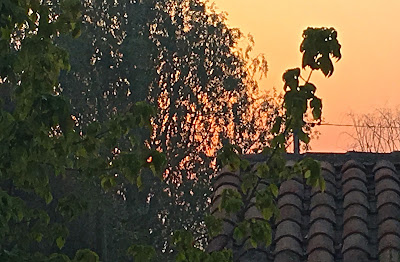 |
| When not on fire, Chile's Mediterranean landscapes resemble California's. |
In the last stages
of updating Moon Patagonia,
I’ve just spent ten days in Puerto Varas, leaving
my bedroom/office in a friend’s house mainly to grab lunch or, when possible,
enjoy a more leisurely dinner at restaurants like Almendra
or Casa
Valdés. In the process, I’ve only paid minimal attention to what’s
happening in the rest of Chile (and the world), but that’s become unavoidable.
As I drove north yesterday, past the city of Chillán on the Panamericana yesterday,
the smoke from Chile’s worst
wildlife season ever became a palpable presence.
 |
| On the highway north of Chillán, the smoke obscures the landscape |
Living in
California, whose Mediterranean
climate is a mirror image of central Chile’s, I’m more than aware of the wildfire
dangers. In October of 1991, the dramatic Oakland
firestorm destroyed more than 3,000 homes—some barely a mile from our own rented
house—and killed 25 people. That was at the end of a long hot summer.
 |
| Red sky at morning: a smoky sunrise at Talca |
In Chile,
though, summer has barely begun—normally, the warm and dry autumn months of
March and April would be the time to worry. It seems, though, that at least some
of the fires here are the result of arson. In the meantime, a red sun rose over
Talca this morning, and my
hosts here tell me that tourist traffic has fallen off in what should be peak
season.
I’ll be in Santiago until Friday night,
when I fly back to California to face another disaster: the disgraceful
executive order from the occupant of the White House that prohibits Muslims
from certain countries—even permanent residents and others with lawful visas—from
entering the country. There’s been chaos at US airports and immediate
resistance from civil liberties lawyers, who have obtained some injunctions
against the measure, but the damage to the country’s credibility will far surpass the fire costs to Chile’s heartland. And the White House fire, we know for certain, is
intentional.








